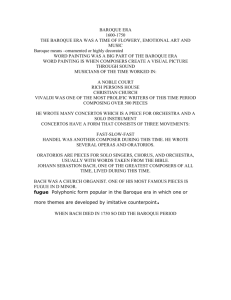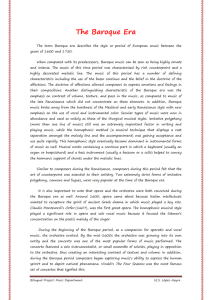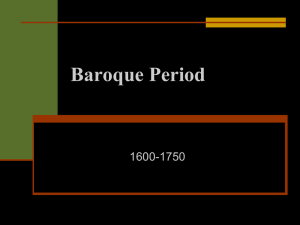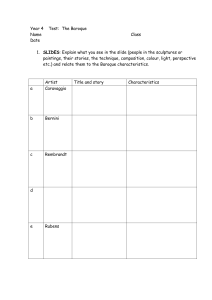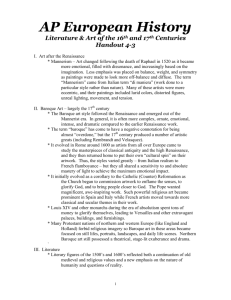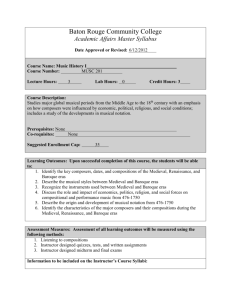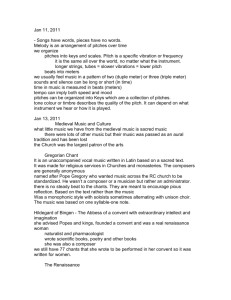baroque music - Junta de Andalucía
advertisement
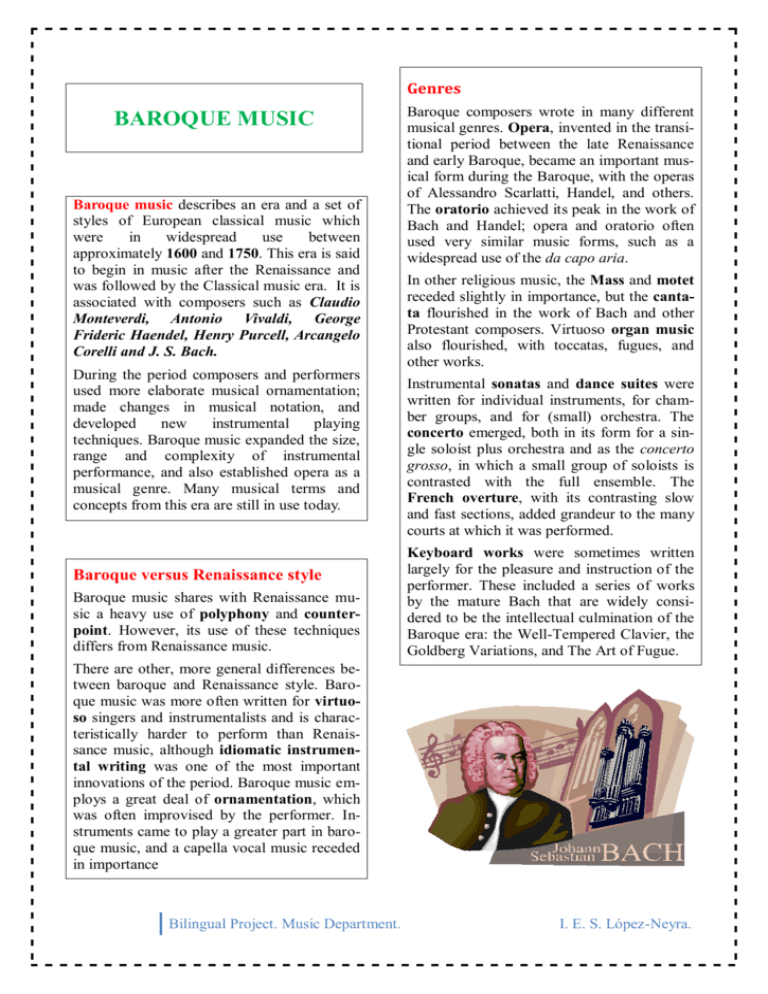
Genres BAROQUE MUSIC Baroque music describes an era and a set of styles of European classical music which were in widespread use between approximately 1600 and 1750. This era is said to begin in music after the Renaissance and was followed by the Classical music era. It is associated with composers such as Claudio Monteverdi, Antonio Vivaldi, George Frideric Haendel, Henry Purcell, Arcangelo Corelli and J. S. Bach. During the period composers and performers used more elaborate musical ornamentation; made changes in musical notation, and developed new instrumental playing techniques. Baroque music expanded the size, range and complexity of instrumental performance, and also established opera as a musical genre. Many musical terms and concepts from this era are still in use today. Baroque versus Renaissance style Baroque music shares with Renaissance music a heavy use of polyphony and counterpoint. However, its use of these techniques differs from Renaissance music. Baroque composers wrote in many different musical genres. Opera, invented in the transitional period between the late Renaissance and early Baroque, became an important musical form during the Baroque, with the operas of Alessandro Scarlatti, Handel, and others. The oratorio achieved its peak in the work of Bach and Handel; opera and oratorio often used very similar music forms, such as a widespread use of the da capo aria. In other religious music, the Mass and motet receded slightly in importance, but the cantata flourished in the work of Bach and other Protestant composers. Virtuoso organ music also flourished, with toccatas, fugues, and other works. Instrumental sonatas and dance suites were written for individual instruments, for chamber groups, and for (small) orchestra. The concerto emerged, both in its form for a single soloist plus orchestra and as the concerto grosso, in which a small group of soloists is contrasted with the full ensemble. The French overture, with its contrasting slow and fast sections, added grandeur to the many courts at which it was performed. Keyboard works were sometimes written largely for the pleasure and instruction of the performer. These included a series of works by the mature Bach that are widely considered to be the intellectual culmination of the Baroque era: the Well-Tempered Clavier, the Goldberg Variations, and The Art of Fugue. There are other, more general differences between baroque and Renaissance style. Baroque music was more often written for virtuoso singers and instrumentalists and is characteristically harder to perform than Renaissance music, although idiomatic instrumental writing was one of the most important innovations of the period. Baroque music employs a great deal of ornamentation, which was often improvised by the performer. Instruments came to play a greater part in baroque music, and a capella vocal music receded in importance Bilingual Project. Music Department. I. E. S. López-Neyra.

